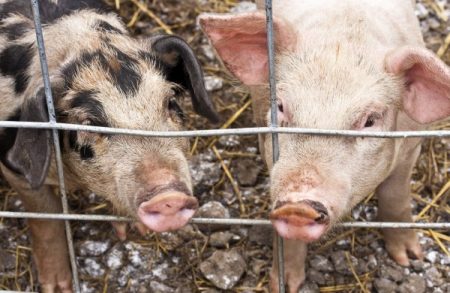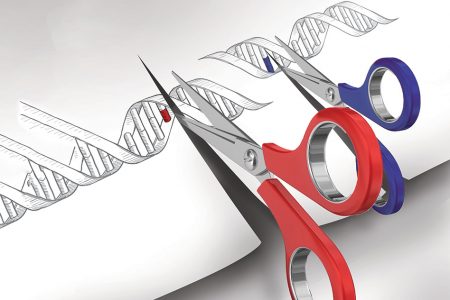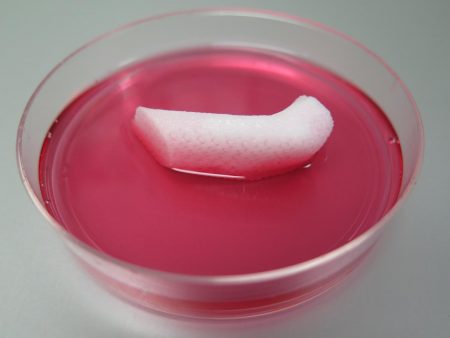August 15, 2017 – I took a short leave from this blog site to attend a dear family friend’s wedding event in Cleveland over the weekend. My friend is a transplant surgeon. Around our table, at the wedding dinner, the conversation among the guests included discussions about where people lived, how they were related to the wedding party, medical breakthroughs such as CRISPR/Cas9, stem cells, and regenerative medicine, among many other topics of equally interesting note.
It got me thinking about some of the latest journal articles I’ve been reading on studies describing: how gene-edited pigs may soon become a primary source of organs for human transplants, about the recent reported genetic manipulation of an embryo’s DNA to correct a congenital heart defect, and about new stem cell research capable of regenerating organs, bone and even neurons.
- how gene-edited pigs may soon become a primary source of organs for human transplants,
- how embryonic manipulation of DNA can be used to eliminate defective genes and replace them with healthy ones,
- and how stem cells can be used to regenerate body tissue from organs to bones and even to neurons.
Gene-Edited Pigs
The genetic tool CRISPR/Cas9 seems to be driving a biomedical revolution. In the case of genetically modified pigs becoming a source for harvesting organs for transplant, a new biotechnology company, eGenesis, is using the tool to modify the DNA of pigs to humanize their organs and eliminate rejection.
Animal organ transplants are known in the biomedical world as xenografts. In the past only inert, that is dead animal tissue, could be put into a human body. For example, my daughter’s first two implants were porcine xenografts, pig valves. The third was bovine, a cow valve. In all three the tissue was dead. The result, my daughter’s immune system did not react. If the valves had been alive then her immune system would have mounted an assault each time leading to rejection episodes.
Beyond the issue of foreign tissue rejection, there is an additional danger lying within xenografts. Within pig tissue lies viruses that are of little consequence to their porcine hosts. But if introduced into a human through a xenograft, can become a serious source of health problems. This issue plus rejection have been evident since the first efforts to use animal tissue in transplant procedures. So even if we were to manipulate a pig’s DNA to humanize it, the latent threat of endemic viruses might persist.
eGenesis is working on two remedies. The first involves manipulating pig cell DNA to humanize it so that when implanted in a human recipient it doesn’t set off the immune system. The second is working on pig cells DNA to eliminate native hidden viruses. The end result will be a merger of the two into a single cell and then use it to clone a humanized pig.
Will humanized pig organs be available for transplant soon? We are probably a decade away from seeing this become a reality. But it does make for great headlines.
The latest research is published in the journal Science in an article entitled, “Inactivation of porcine endogenous retrovirus in pigs using CRISPR-Cas9.”

Replacing Defective Genes
The latest headline on this subject appeared just a few weeks ago and I described it in an August 7th, 2017 posting on this site related to the repair of a faulty gene responsible for the congenital condition known as hypertrophic cardiomyopathy.
CRISPR/Cas9 appears to be the current tool of choice for altering DNA. It has been used for a number of years now to reverse disease symptoms in laboratory animals. It had not, prior to two recent experiments, been used with humans. But that is coming to an end particularly in helping prevent diseases caused by genetic disorders.
Genetic diseases are classified as monogenic, multifactorial or chromosomic.
In the case of the first, the genetic defect is confined to one gene. Examples of monogenetic disorders include sickle cell anemia, cystic fibrosis, Tay-Sachs, and polycystic kidney disease.
In the case of the second, it involves mutations in many genes. Heart disease, diabetes, and most cancers are multifactorial.
In the case of the third, it is associated with imperfections in the copying of chromosomes leading to abnormalities. The most well known of these is Down syndrome where an extra copy of the 21st chromosome occurs even though no genes within the extra copy are abnormal.
Microsurgery at the molecular level using a tool like CRISPR/Cas9, may prove to be the most significant advance in biomedicine in the 21st century. It could alter the aging process extending human life indefinitely. It could end cancer and many other diseases that today appear intractable. And on its dark side, it could lead to designer babies and super humans. How the consequences of this disruptive technology unfold remains unknown.

Stem Cells and Organ Regeneration
I have referred to stem cells, and particularly mesenchymal stem cells, as the “god cell” in previous postings on this site. That’s because mesenchymal stem cells (MSM) are undifferentiated cells hiding in plain sight within our body tissues. With the right stimuli, they can become bone, cartilage, muscle, and fat. It is this multipotential that makes these cells the key to the new field of study known as regenerative medicine.
Imagine regrowing a missing leg or arm. For a salamander that is no big deal. And for a male moose, elk or deer, regenerating antlers is an annual right of passage. But for humans regenerating body parts has been confined to regrowing muscle and bone after traumatic injury. In no case, however, has a human lost a leg and then regrown it, bone, muscle, cartilage, tendons, ligaments, toes and nails.
Manipulating stem cells to give humans the same abilities as a starfish or salamander is the dream of a number of scientists. Here are just some of their dreams being turned into realities:
- At the Max Planck Institute in Berlin, researchers have grown the inner lining of human fallopian tubes using stem cells. Other research has created lab-grown vaginas which were implanted in women between ages 13 and 18 and continue to function normally.
- Ohio State University scientists have grown, from skin cells reverted to pluripotent stem cells, a pea-sized brain, equivalent in size to a 5-week-old human fetus. The brain had all the right anatomical constructs including neurons containing axons and dendrites.
- Scientists at UC-Berkeley, have taken stem cells and produced a mini heart in a petri dish.
- Australian scientists have done the same with a kidney. Hebrew University has used stem cells to create mini-livers.
- At University of Michigan, stem cells have grown bronchi, blood vessels and air sacs which functioned as a lung for more than 100 days.
- Mini-stomachs have been grown at Cincinnati’s Children’s Hospital Medical Center. In Russia, an experiment used a dissolvable scaffold implanted into a rat to form the structure for stem cells to regrow an esophagus.
- Even the penis has been the subject of regnerative researchers who at Wake Forest University successfully used rabbit stem cells to regenerate erectile tissue.
- Human ears have been grown using 3D printers spraying stem cells onto a dissolvable scaffolding made of collagen.
And my favourite, at Duke University, a combination of 3D printing, hydrogels, and stem cells have been used to partially restore knee joints. And Duke is not alone in pursuing knee repair using a combination of stem cells and additive manufacturing. University of Gothenburg‘s Sahlgrenska Academy has been printing stem cells using a 3D printer to create cartilage which along with a cellulose matrix can restore an osteoarthritic knee, one just like mine.
Do we care which of these three biomedical breakthroughs wins out in the end? No. We need them all.


















